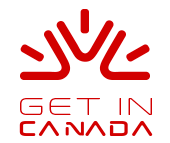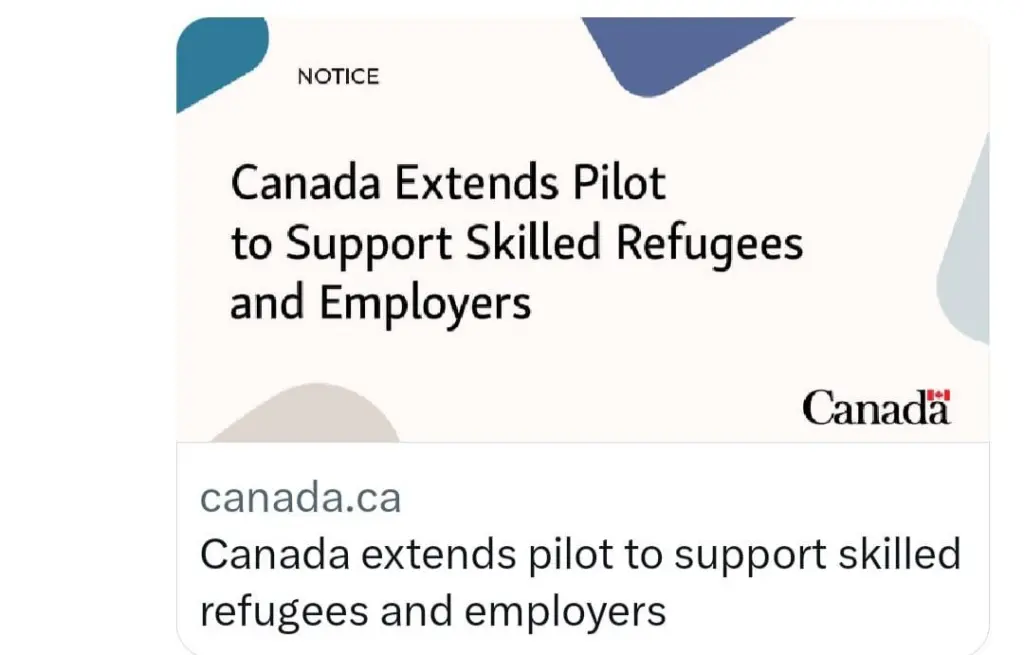11 Easiest Ways to Immigrate to Canada in 2025
Home to friendly residents, jaw-dropping scenery, and a robust economy, it’s not baffling that Canada attracts a significant number of international immigrants every year. Canada is known for welcoming immigrants and has become a good choice for people who are looking for a fresh start. Just so you know, the Canadian government anticipates welcoming over 1.4 million new immigrants between 2024 and 2026, and 2025 might be your perfect year to pin your name on that list.
Are you looking for the easiest ways to immigrate to Canada in 2025? The process of immigrating to a new country can be complex and time-consuming, but there are several ways to make it easier. Here is a comprehensive guide to 11 of the easiest ways to immigrate to Canada in 2025:

11 Easiest Ways to Immigrate to Canada in 2025
Understanding Canada’s Immigration System
It’s crucial to grasp the whole idea of the immigration system before even dipping a toe. The Canadian immigration system, known for its diversity, primarily falls into three categories: Economic, Family, and Refugee. Each has unique criteria fitting different individuals’ needs.
“Why is immigration important to Canada?” you may ask. The answer is simple. The diverse cultures, strong work ethic, and global perspective that immigrants bring with them greatly enrich the Canadian landscape. Furthermore, from an economic standpoint, immigrants play a crucial role in balancing the aging population and forming a solid foundation for the Canadian workforce.
Find out if you are eligible to get in Canada →
1. Express Entry (EE)
First, let us talk about the Express Entry Program, which remains Canada’s golden ticket for skilled workers in 2025. The purpose of this electronic immigration program is to accommodate individuals who possess the particular skills demanded by the labor market. The advantages? Quicker processing times, usually taking around six months.
The Express Entry system manages applications for:
If you think you’re a good fit, buckle up with the essential prerequisites: work experience, language proficiency (in English or French), and an adequate education level. Then comes the real game: creating an Express Entry profile and subsequently entering the candidate’s pool. Higher points on the Comprehensive Ranking System mean a swifter Invitation to Apply (ITA) from Canada—now doesn’t that sound like a contest you want to win?
2. Provincial Nominee Programs
The Provincial Nominee Programs (PNPs) continue to be vital in 2025. All of Canada’s provinces and territories—aside from Quebec, which has its own system—offer these individual immigration programs. A neat feature if you have a soft spot for a specific province!
To qualify, you need a nomination from a province (skill- or job offer-specific), after which you can apply with a federal immigration application. These programs are designed to help immigrants settle in a specific region of Canada and meet labour market demands.
Each province’s criteria may change annually, so it’s critical to review 2025 updates on your chosen province’s immigration website.
3. Family Sponsorship
Family is the most important thing, right? With the Family Sponsorship program, Canada demonstrates their agreement. Through these immigration channels, permanent residents or citizens of Canada can sponsor their parents, grandparents, spouses, dependent children, and even their conjugal partners.
So, if you’re lucky enough to have family in Canada willing to sponsor you, this path is your goldmine. However, it’s not all rosy; the sponsor must demonstrate financial capability to support the incoming family member(s). So ensure that your sponsor is well prepared for this commitment to avoid any bumps on the immigration road.
If you have a spouse, common-law partner, child, parent, or grandparent who is a Canadian citizen or permanent resident, they may be able to sponsor you to come to Canada. The sponsor must be able to demonstrate that they have the financial means to support you and ensure that you do not need to rely on government assistance.
4. Study Permit
You might as well take advantage of the opportunity to enhance your education and secure a permanent residency, don’t you think? Canada offers this exact award to international students. You first procure a study permit (provided you have an admission letter from a designated learning institution in Canada). Then, voilà, you are set to transition to permanent resident status, especially with programs like the Post-Graduation Work Permit (PGWP).
Recent updates in 2025 have expanded work opportunities for international graduates, making this path more accessible than ever.
5. Work Permits | Can I move to Canada without a job offer?
Building on the traditional idea of moving for work welfare, Canada offers immigration through work permits. The catch? You must have a valid job offer from a Canadian employer, who would then secure a Labour Market Impact Assessment (LMIA). Browsing through Canada’s job bank, networking, or leveraging international job fairs could get you that golden job letter. Afterwards, opening the door to permanent residency isn’t a far-fetched idea.
If you have a job offer from a Canadian employer, you may be eligible for a work permit, which allows you to live and work in Canada for a specific period. To be eligible for a work permit, you must have a valid job offer from a Canadian employer, meet the specific requirements of the job, and be able to demonstrate that you will leave Canada at the end of your work permit. This can be a stepping stone to permanent residency.
6. Investing in Canada
Show me the money! Yes, for those with deep pockets, investment immigration programs can be an opportune pathway. For a substantial investment in the Canadian economy, the government rolled out a red carpet for permanent residency.
The amount to invest, however, differs based on various entrepreneurial or investor programs, essentially either starting a business or investing in an existing one. Do recall that a decision to invest must always be well-informed, thoroughly understanding the nuances of the specific program you opt for.
For example, The Start-up Visa Program is designed for entrepreneurs who want to start a business in Canada. To be eligible, you must have a business idea that has been accepted by a designated organization and a letter of support from that organization. You must also meet the program’s requirements, which include demonstrating that you have enough financial resources to support yourself and your business and passing a medical exam.
Find out if you are eligible to get in Canada →
7. Temporary Foreign Worker Program
The Temporary Foreign Worker Program provides temporary employment to foreign workers to address labor needs in Canada. After melting into the Canadian work culture, many people shifted their temporary status to permanent. Keep in mind, that the employer must still secure an LMIA, indicating that no Canadian citizen or permanent resident was available to fill the position.
However, if you are self-employed and can demonstrate that you have the experience and skills to be self-employed in Canada, you may be eligible to immigrate through this program. To be eligible for the Self-Employed Persons Program, you must have relevant experience in cultural or athletic activities or farm management. You must also have the financial resources to cover your expenses and establish your business in Canada.
8. Atlantic Immigration Pilot → Atlantic Immigration Program
This popular pathway has been officially renamed to the Atlantic Immigration Program. It includes Newfoundland and Labrador, New Brunswick, Nova Scotia, and Prince Edward Island.
It remains a fantastic opportunity for skilled workers and international graduates with job offers in the region.
9. Rural and Northern Immigration Pilot
Much like the Atlantic Immigration Pilot Program, the Rural and Northern Immigration Pilot focuses on specific rural and northern communities. A full-time job offer from one of the participating communities is what you need to get the ball rolling. The Rural and Northern Immigration Pilot is a program designed to help immigrants settle in smaller communities in the provinces of British Columbia, Manitoba, Ontario, and Saskatchewan.
To be eligible for the Rural and Northern Immigration Pilot, you must have a job offer from a designated employer in a participating community and meet the specific requirements of the program. You must also have the skills and education needed to successfully integrate into the labor market and community in the participating community. However, do ensure that rural living aligns with your lifestyle, as adjusting can be a tad bit challenging for city dwellers – trading skyscrapers for the serene countryside!
The Rural and Northern Immigration Pilot is still going strong in 2025. It targets smaller Canadian communities facing labor shortages. A full-time job offer from a participating community is required to qualify.
10. Humanitarian and Compassionate Consideration
If you are not eligible for any other immigration program, you may be able to apply for permanent residency on humanitarian and compassionate grounds. This is a discretionary process, and each case is considered on its own merit. To be considered for humanitarian and compassionate consideration, you must demonstrate that you would face unusual, undeserved, or disproportionate hardship if you were required to leave Canada.
11. Home Child Care Provider and Home Support Worker Pilot
Alright, moving to our last pathway is a bit of a twofer, comprising the Home Child Care Provider and Home Support Worker programs. These pilot programs are the keys to the Canadian house for you, especially if you are resourceful and patient enough to offer caregiving services.
Just remember to be adequately prepared for a dramatic shift in roles and responsibilities. Nothing spells adaptation better than easing into an entirely new lifestyle.
Turning the Canadian Dream into Reality
Whew! With that, we’ve unveiled the 11 most straightforward paths to Canadian immigration. Yes, the immigration labyrinth might seem intricate initially. But remember, folks, armed with accurate information, adequate preparation, and a lot of patience, the intimidating process suddenly becomes an encouraging enigma.
Finally, moving to a new country can be an exciting but overwhelming experience. So, remember that this isn’t a sprint but a marathon. Dedicate time, do your research, be meticulous about details, and opportunely enough, you’ll find yourself basking in the Canadian charm. Good luck with your immigration journey!











